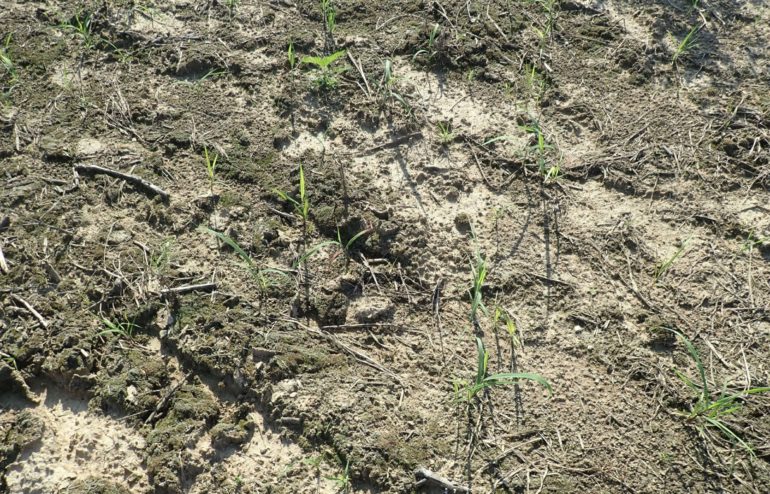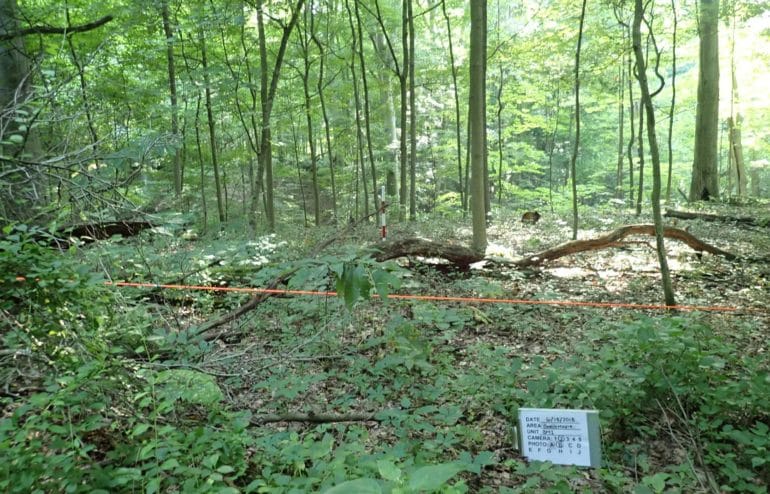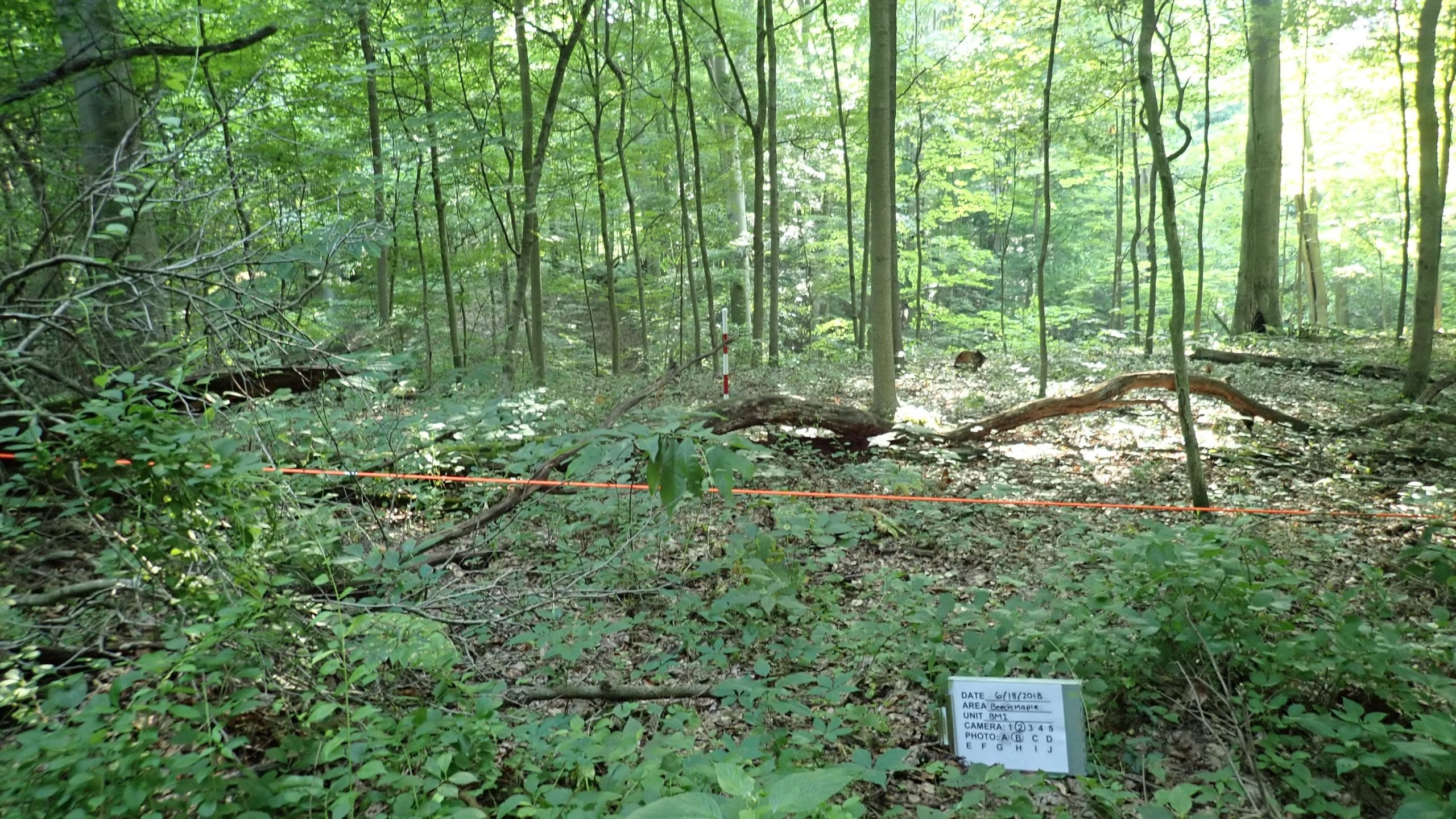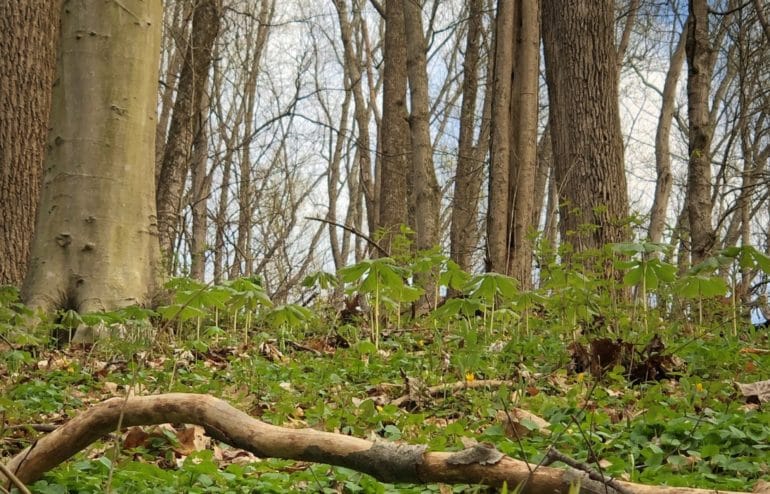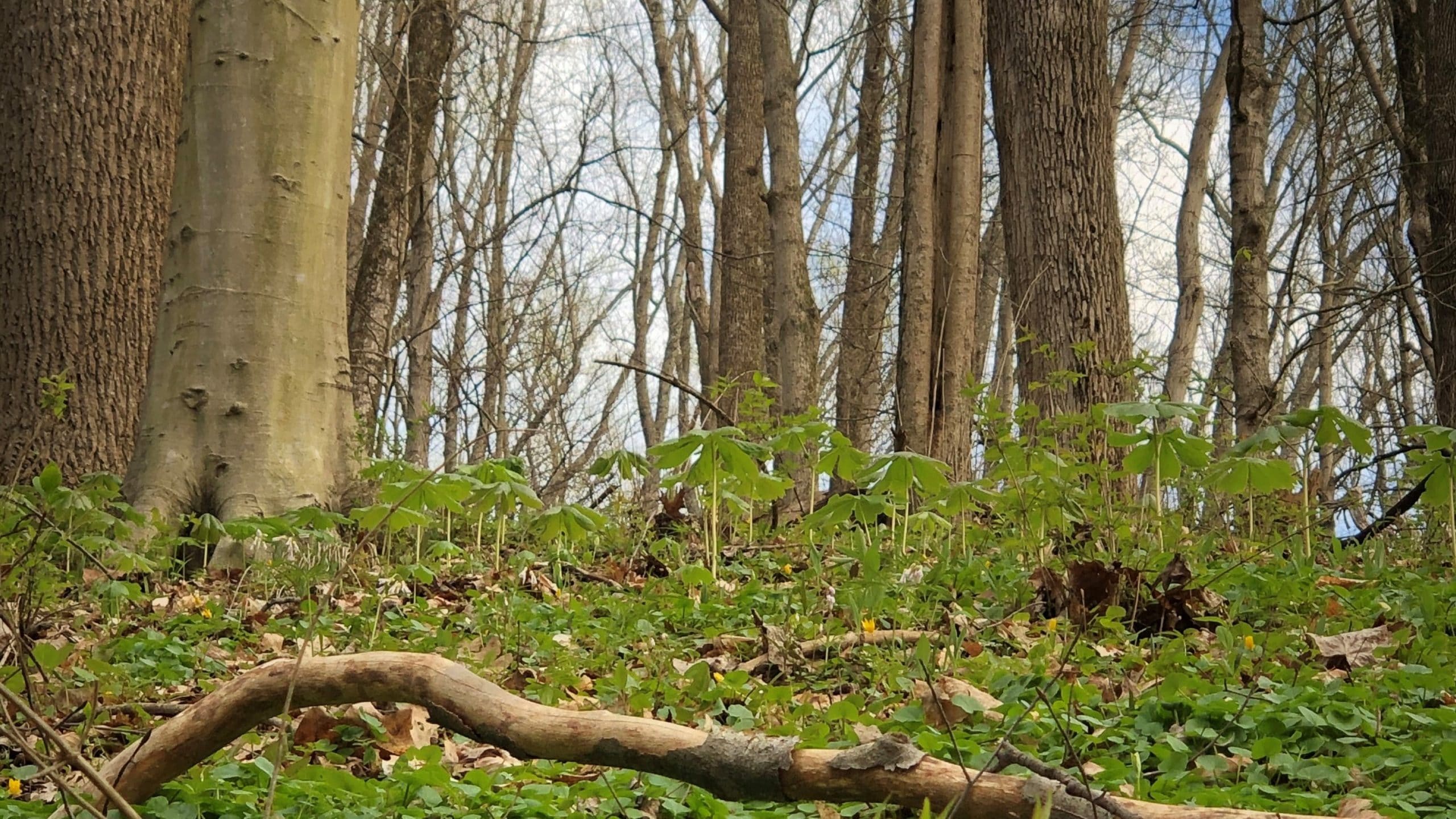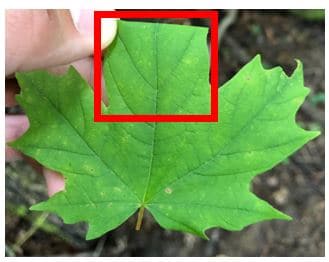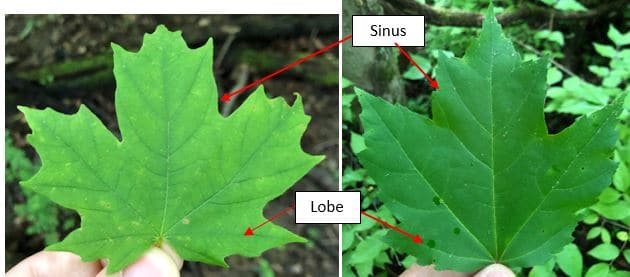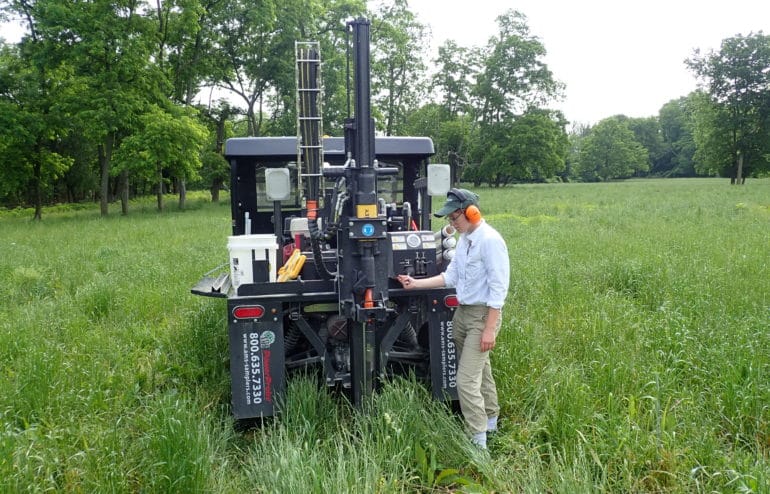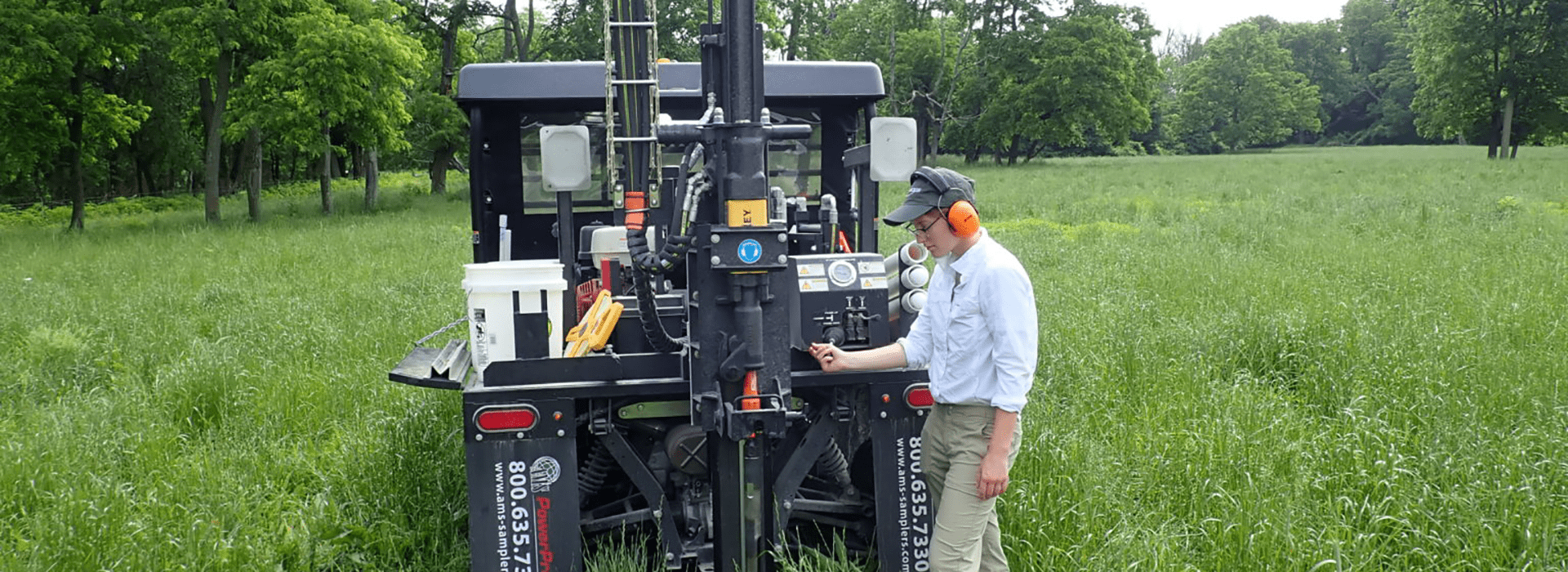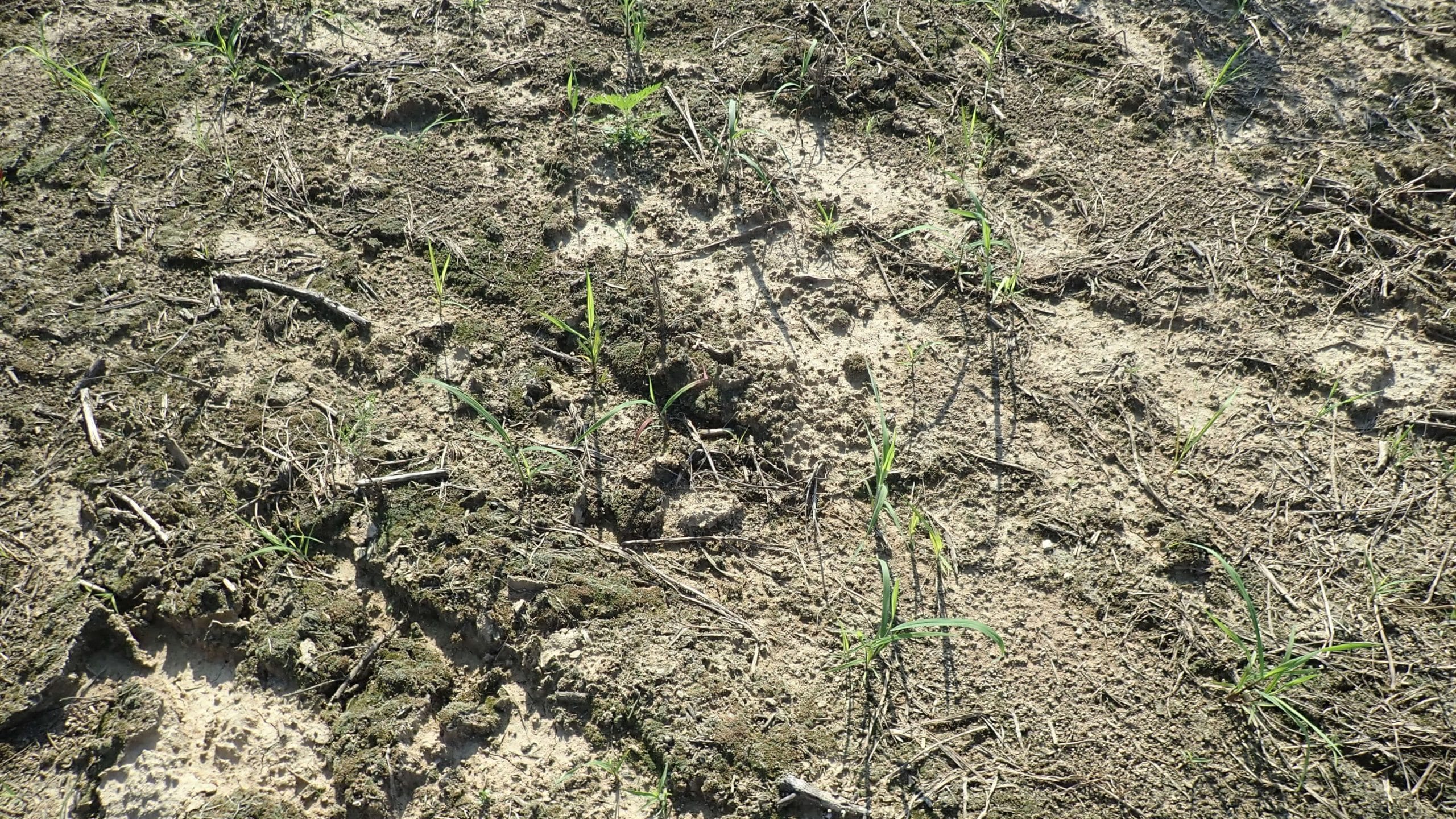
One little seedling, two little seedlings….
The native warm season grasses were finally planted in July! Two weeks post planting, we were in the field counting the native warm season grasses. At this point they were about 1-3 inches tall and could be distinguished from weeds by their long thin blades. We also counted the cover crops and weeds growing in the plots. The cover crops were brown top millet and a mix (Ray’s crazy) of plants including sorghum sudangrass, sunflowers, legumes, and radishes. These crops provide cover for the grasses and grazing material for the cattle, but only made it more challenging to find the native grasses growing underneath.
Our second count occurred three weeks after the germination count. The weather was hot and humid. Luckily the native grasses had doubled in size and had more features to aid with identification. The big bluestem started to become fuzzy, the little bluestem was beginning to fan out, and the Indian grass had a round stem with a reddish – purple color (see photos below). The cover crops however, were much taller so we still had to sift through the cover to find our grasses.
–Chad G.

